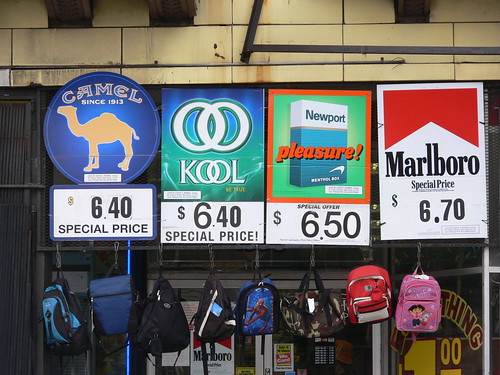The Last Back-to-School Sale Ever

What if we could stop wasting our money on crap and really improve education?
Originally published in The Pulse: Education's Place for Debate
I nearly forgot that it was Labor Day until I walked into my local office supply superstore and was assaulted with memories of back-to-school shopping. As a kid, getting new cartoon pencils or bookcovers reduced the horror associated with another school year. As a parent, I resented buying materials the public school should provide and wasted too many brain cells trying to remember if "Trapper Keepers" were required or banned this year. The hole in my wallet resulted from satisfying the fetishes of teachers who (it seemed) each required a different color of ink, or no ink at all. Why should I have to remember which teacher required a spiral-bound notebook and which one required a looseleaf? Oh yeah, last year's metal looseleaf binder is now verboten because a kid in Omaha figured out how to turn it into a radio so he could listen to the World Series during class.
Why must we engage in this orgy of consumerism?
Well, we don't have to.
I know some of you must be thinking, "But Dr. Stager, how can my child possibly take a job away from an Indian student without my investment in glitter pens?"
We could work smarter and buy every schoolchild in America a personal laptop computer. The laptop is the protean device. At the most primitive level it's crayons and pens and paint and calculator and notebook and index cards and protractor all in one package. However, the laptop performs all the functions of those tools better and in combinations previously impossible. The sum of the parts is greater than the value of the parts themselves.
Most importantly, traditional school supplies do nothing to make school more relevant or modernize the learning experience for today's students. Pens, papers and notebooks reinforce educational practices of a bygone era and don't require teachers to rethink their practice. Ubiquitous computing has the potential to change everything. With the money spent on school supplies why wouldn't we at least try to make schools better?
You ask, "But Dr. Stager, doesn't a laptop cost even more than a pair of sneakers?" Yes, a bit, but in most school districts a laptop costs less than your kid playing football (not including personnel costs). It has long been the case that the cost of a full-function multimedia Toshiba or Apple laptop - including bag, insurance and extended warranty - costs less per month, per student, than the cost of a trombone rental. We have long valued the investment in a musical instrument and schools know how to provide an instrument for a child who can't afford it.
At the recent EDUCOMM Conference, Anytime Anywhere Learning Foundation President & Founder Bruce Dixon presented a vision of how the complete student laptop package can cost less than $20/student per month today. I've long proposed that states could offer generous tax credits for parents who buy their children a laptop and relieve schools of the burden of being in the computer business.
Think I'm crazy? According to the National Retail Federation, Families with school-age children will spend an average of $563.49 on back-to-school merchandise - $18.4 billion in total. That's the equivalent of between 18-20 million full-featured student laptops at current retail prices, before a volume discount. The National Retail Federation reports that the average student will spend $94.02 on school supplies. Add the cost of a calculator and the One Laptop Per Child Computer is paid for immediately. Chuck a few textbooks and we actually save money. Since laptop costs are usually amortized across three to four years, we could revolutionize education by next year's back-to-school.
Photo by Vlada Lazerien - http://flickr.com/photos/alvarez/434514751/ - Creative Commons Non-commercial, attribution & no derivative works license.
Labels: 1:1 computing, AALF, back-to-school, Bruce Dixon, education, EDUCOMM, Gary Stager, laptops in education, school supplies
